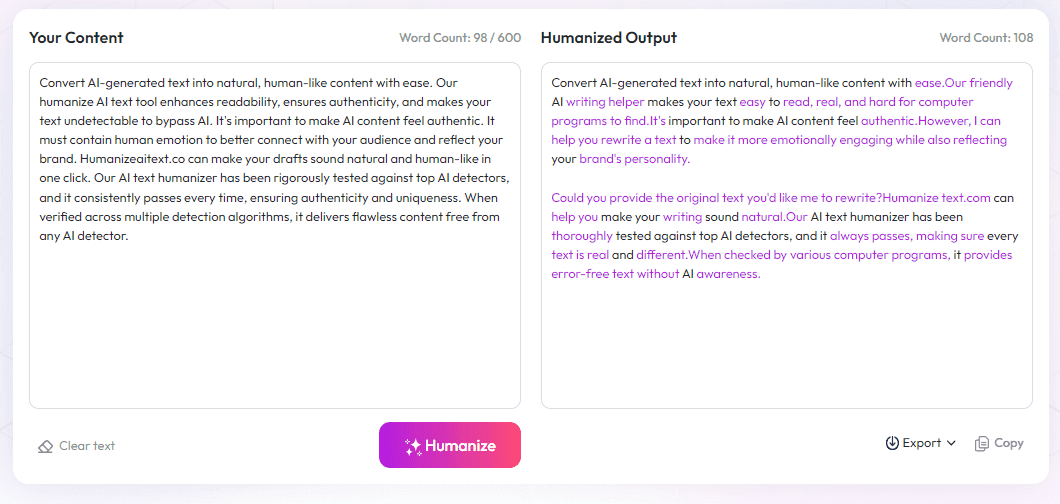Table of Contents
Many people find the worlds of gothic romance and dark fantasy intriguing but often get confused about what truly sets them apart. If you've ever wondered how these genres differ in mood, characters, or setting, you're not alone. Keep reading—by the end, you'll see clear differences and similarities that make each one special, helping you choose your next read or even craft your own story.
In this quick overview, we'll compare their atmospheres, tones, and character focuses, plus address common myths and include some notable examples. So, if you're curious about what makes gothic romance cozy and mysterious or dark fantasy intense and fantastical, you're in the right place!
Key Takeaways
Key Takeaways
- Gothic romance focuses on love stories set in spooky settings with emotional depth and supernatural elements, creating a mysterious and melancholic mood.
- Dark fantasy features gritty worlds with dark magic, complex characters, and external conflicts involving morality, violence, and survival.
- The main difference is gothic romance emphasizes internal emotional struggles, while dark fantasy leans toward external battles and moral gray areas.
- Both genres use setting to evoke mood: gothic worlds are cozy yet eerie, dark fantasy worlds are expansive and ominous.
- Gothic tone is often moody and passionate, while dark fantasy has a tense, gritty atmosphere with dangerous worlds.
- Characters in gothic romance are driven by internal conflicts like forbidden love, whereas dark fantasy characters often face external threats and moral ambiguity.
- Romantasy blends romance and dark magic, showing how genres overlap, and offers creative stories that mix emotional depth with dark worlds.
- Many misconceptions exist, but these genres today are rich, emotional, and popular beyond niche audiences, with modern stories using atmospheric settings and complex themes.

What Is Gothic Romance?
Gothic romance is a genre rooted in 18th and 19th-century literature that combines romance, suspense, and supernatural elements. It typically features eerie, haunted settings like old castles, monasteries, or decaying mansions that evoke feelings of mystery and melancholy.
This genre is characterized by emotional intensity, often telling tragic love stories intertwined with ghostly phenomena, curses, or dark family secrets. Think of classic works like Ann Radcliffe’s novels or the iconic *Jane Eyre*—stories that blend passion with a sense of foreboding.
The tone tends to be atmospheric and moody, creating a sense of suspense and vulnerability. Gothic romance explores themes of forbidden love, moral dilemmas, and the blurry line between the natural and supernatural.
Familiarity with gothic horror motifs—such as ghostly apparitions or cursed environments—and an emphasis on emotional and psychological conflict are hallmarks of the genre. Modern gothic romantasy, a blend of Gothic romance with fantasy elements, has seen a rise in popularity, emphasizing magical motifs within gothic settings.
Understanding Dark Fantasy
Dark fantasy is a genre that combines elements of fantasy with darker, often horror-inspired themes. It features worlds filled with magic, mythical creatures, curses, and morally gray characters who are often flawed or ambiguous.
This genre delves into themes of trauma, moral conflict, and the perils of power, frequently showcasing dangerous magic systems and cursed landscapes. Unlike lighter fantasy, dark fantasy embraces the brutal realities of its worlds, often depicting violence, betrayal, and psychological horror.
Popular examples include works like George R.R. Martin’s *A Song of Ice and Fire* or Neil Gaiman’s darker fairy tales. Dark fantasy offers a more intense, gritty take on magical worlds, highlighting the shadowy aspects of heroism and villainy.
It appeals to readers who enjoy morally complex characters and stories where good and evil are not simply black and white, but muddled in shades of gray. The genre’s emphasis on mystery, danger, and dark magic makes it distinct but sometimes overlapping with horror and grim fantasy narratives.
Key Differences Between Gothic Romance and Dark Fantasy
The main distinction lies in their focus and emotional tone. Gothic romance centers on passionate, often forbidden love stories set against spooky, atmospheric backdrops with supernatural twists. Meanwhile, dark fantasy emphasizes adventurous magic worlds with morally complex characters and darker themes like violence and betrayal.
Gothic romance tends to evoke melancholy and suspense with an emphasis on emotional depth in relationships. Dark fantasy leans into gritty worlds with complex conflicts, where emotions are intertwined with themes of power, darkness, and survival.
While gothic romance might feature ghosts or curses as motifs, dark fantasy typically involves dark magic, cursed lands, and mythic creatures. The conflict in gothic romance is often internal—emotional turmoil and forbidden love—whereas dark fantasy involves external battles with light and dark forces.
For example, a gothic romance might focus on a love story threatened by supernatural apparitions in an ancient estate, whereas a dark fantasy might tell of a hero battling cursed monsters in a ruined kingdom.
How Setting and Atmosphere Vary in Each Genre
Setting and atmosphere in gothic romance are crucial—think fog-laden castles, shadowy corridors, and decaying ruins that create an aura of mystery and melancholy. The environment acts almost as a character, reflecting inner turmoil and romantic tension.
In dark fantasy, the world-building is often vast, featuring cursed lands, bleak landscapes, and mystical realms infused with dark magic. The atmosphere tends to be tense and foreboding, emphasizing danger and the unknown.
While gothic romance creates a sense of intimacy amid eerie surroundings, dark fantasy often presents expansive, perilous worlds where characters face existential threats. Both genres use setting to evoke emotion: gothic worlds are claustrophobic and melancholic; dark worlds are ominous and unpredictable.
Knowing how to craft these settings can heighten storytelling impact—use fog, shadows, and ancient architecture for gothic romance; treacherous terrains, cursed forests, and mystical ruins suit dark fantasy tales.
Tone and Conflict in Gothic Romance Compared to Dark Fantasy
The tone in gothic romance is mel0ancholic, passionate, and suspenseful. It centers on internal conflicts of love, morality, and fear, often accompanied by tragic or bittersweet endings.
Dark fantasy, on the other hand, maintains a gritty, tense tone, with external conflicts involving life-and-death struggles, magical curses, or moral ambiguity. The emotional conflict is often intertwined with danger and chaos.
Where gothic romance emphasizes emotional vulnerability and forbidden love’s turmoil, dark fantasy explores the moral grey areas of power and survival. The conflicts in dark fantasy are frequently more violent and brutal, reflecting the dangerous worlds characters inhabit.
For writers, balancing tone is key—gothic romance should touch on passion and melancholy delicately, while dark fantasy benefits from intense action, moral complexity, and atmospheric dread.
For example, a gothic romance might feature a love thwarted by ghostly apparitions, whereas dark fantasy could involve a hero wrestling with dark magic that corrupts their soul.

Focus on Characters in Both Genres
Characters are at the heart of both gothic romance and dark fantasy, but they serve different purposes.
In gothic romance, characters often embody internal conflicts, like the tormented hero or heroine haunted by past secrets or forbidden love.
Developing emotionally complex characters that face moral dilemmas can help deepen reader engagement—think of protagonists who struggle with their desires versus societal expectations.
In dark fantasy, characters tend to be morally gray or flawed, often caught in external conflicts like battling curses or dark magic.
Creating characters with nuanced backgrounds and realistic flaws makes their journeys believable, even amid fantastical worlds.
Tip: When crafting characters, give each a clear motivation, whether it’s seeking redemption or fighting to survive in a cursed landscape, to keep readers invested.
Common Genre Overlaps and Hybrid Stories
It’s no surprise that many stories blend elements of gothic romance with dark fantasy—these hybrids are trending for a reason.
Romantasy, for example, combines romantic plots with fantastical settings and dark magic, often pulling from both genres’ mood and tone.
Some writers craft stories about cursed love in haunted mansions or forbidden romances set against apocalyptic worlds—perfect examples of genre mashups.
Hybrid stories allow authors to explore rich themes like love amid chaos, moral ambiguity, and supernatural mysteries in innovative ways.
Pro tip: To create a compelling hybrid, balance emotional depth with dark world-building—don’t let the supernatural overshadow the romance or vice versa.
Myths and Misconceptions About Gothic Romance and Dark Fantasy
Many folks think gothic romance equals old, cheesy stories or that dark fantasy is just horror in disguise—both misconceptions.
In reality, gothic romance today is often lush and emotionally intense, while dark fantasy can be deeply poetic and moral, not just scary.
Some assume these genres are only for niche audiences—actually, they’re enjoying increased popularity in mainstream fiction, especially with the rise of romantasy titles.
It’s also a myth that gothic settings are outdated; many modern stories use ancestral mansions or decaying castles to evoke mood without seeming cliché.
Breaking these stereotypes can open up new ideas for storytelling and help you connect with broader audiences interested in dark, romantic, or fantastical tales.
Examples of Gothic Romance and Dark Fantasy Works
Looking for inspiration? There are some standout titles that exemplify each genre—and many that blend both.
Classic gothic romance includes works like *The Monk* by Matthew Gregory Lewis or *Northanger Abbey* by Jane Austen, which set foundational tones.
Modern gothic romances, such as *Rebecca* by Daphne du Maurier or *The Thirteenth Tale*, show how atmosphere and emotional depth remain central today.
In dark fantasy, series like *A Song of Ice and Fire* by George R.R. Martin or *The Witcher* by Andrzej Sapkowski introduce morally complex characters in dark, magic-filled worlds.
Contemporary titles like *A Court of Thorns and Roses* by Sarah J. Maas blend romantic pursuits with rich fantasy elements—perfect for romantasy fans.
Summary of Main Differences and Similarities
To wrap things up, gothic romance focuses more on emotional depth, haunted settings, and forbidden love, often with a melancholic tone.
Dark fantasy leans toward gritty worlds, dark magic, and external conflicts involving survival and morality.
Both genres thrive on creating atmospheric worlds and complex characters, but their core themes pull in different directions—one inward toward emotional conflict, the other outward toward external danger.
Yet, they overlap enough for hybrid stories to flourish, offering rich territory for writers willing to explore both emotional and moral shades.
Recent data shows that romantasy and dark romance titles are surging—if you want to tap into this market, understanding these differences can help you craft stories that stand out.
FAQs
Gothic Romance is a genre characterized by mysterious atmospheres, dark settings, and emotional relationships set against eerie or decaying locations, often involving elements of the supernatural or Gothic architecture.
Dark fantasy emphasizes supernatural, horror, or fantastical elements often involving battles or monsters, while Gothic Romance focuses on emotional stories set in gloomy, mysterious environments with an emphasis on romance and mood.
Both genres explore themes like mortality, the supernatural, secrets, forbidden love, and the struggle between good and evil, but Gothic Romance often emphasizes emotional conflict, while dark fantasy leans toward magical or horror elements.
Yes, hybrid stories combining Gothic elements with dark fantasy themes are common. These stories often feature eerie settings intertwined with supernatural or fantasy aspects, creating rich, layered narratives.



